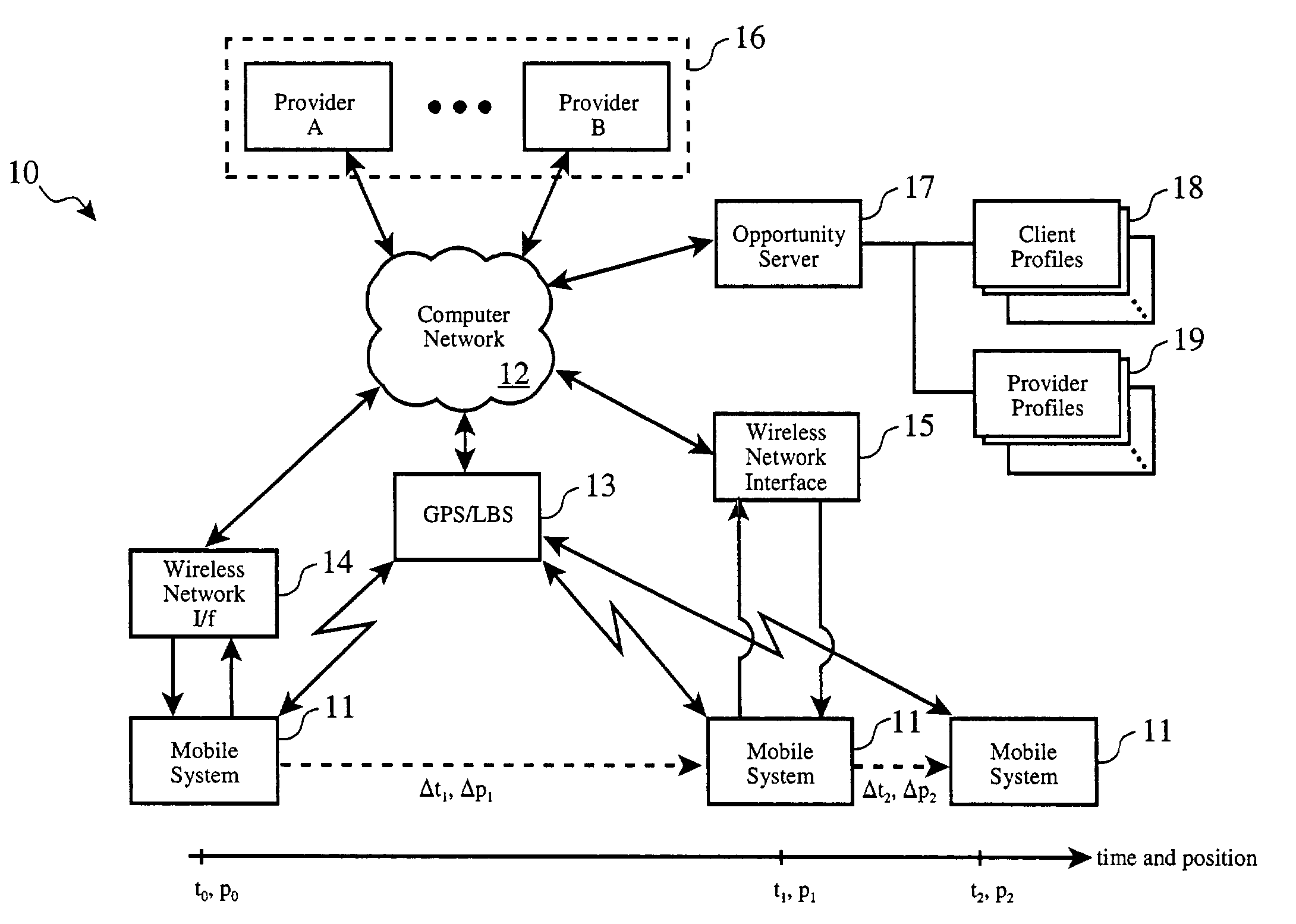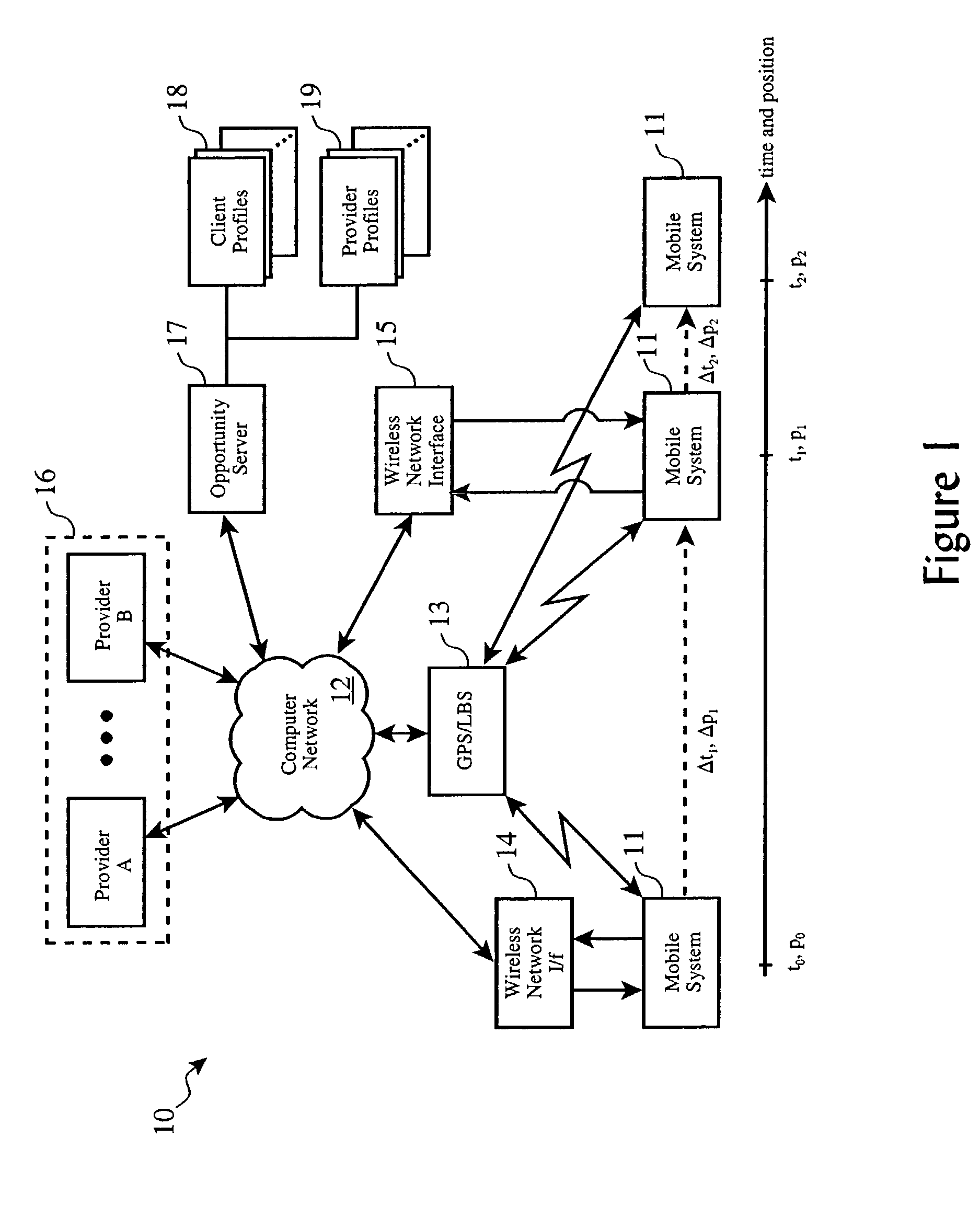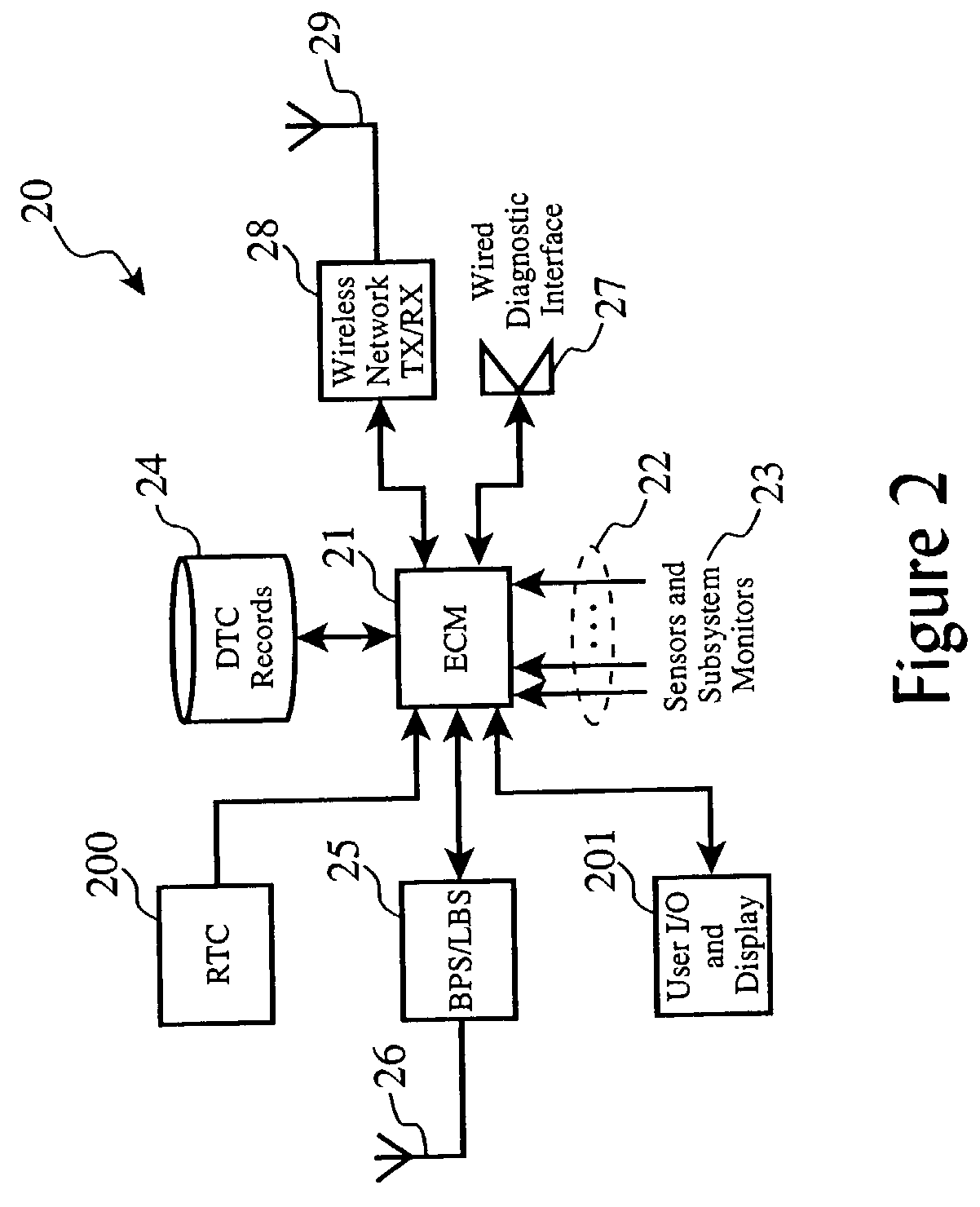Location-based intelligent remote vehicle function control
a technology of intelligent remote vehicle and function control, which is applied in the direction of navigation instruments, instruments, anti-theft devices, etc., can solve the problems of theft, hijacking and flight of vehicles, and the cost of dedicated hardware mounted in the vehicle is too high for the only function provided by the vehicl
- Summary
- Abstract
- Description
- Claims
- Application Information
AI Technical Summary
Benefits of technology
Problems solved by technology
Method used
Image
Examples
Embodiment Construction
[0023]The present invention provides vehicle owners, fleet operators, and law enforcement agencies the ability to selectively and remotely control certain vehicle functions based upon the location of the vehicle, its speed and direction, and time. Implementation of control actions may be deferred or scheduled, and may be coupled with conditional requirements to allow for gradual and safe operation of the vehicle. Control actions may be specified via a Web-based interface (e.g. web site or web page), cellular interface (e.g. voice or text response unit), or a remote function configurator.
[0024]The invention allows provisionsing, activation and deactivation of software components and features via an IVIS. There are a number of useful scenarios and situations for the present invention, but for ease of understanding the invention, we will initially use a police chase for illustration. Car jackings are common within the proximity of airports where out-of-town tourists commonly rent cars....
PUM
 Login to View More
Login to View More Abstract
Description
Claims
Application Information
 Login to View More
Login to View More - R&D
- Intellectual Property
- Life Sciences
- Materials
- Tech Scout
- Unparalleled Data Quality
- Higher Quality Content
- 60% Fewer Hallucinations
Browse by: Latest US Patents, China's latest patents, Technical Efficacy Thesaurus, Application Domain, Technology Topic, Popular Technical Reports.
© 2025 PatSnap. All rights reserved.Legal|Privacy policy|Modern Slavery Act Transparency Statement|Sitemap|About US| Contact US: help@patsnap.com



